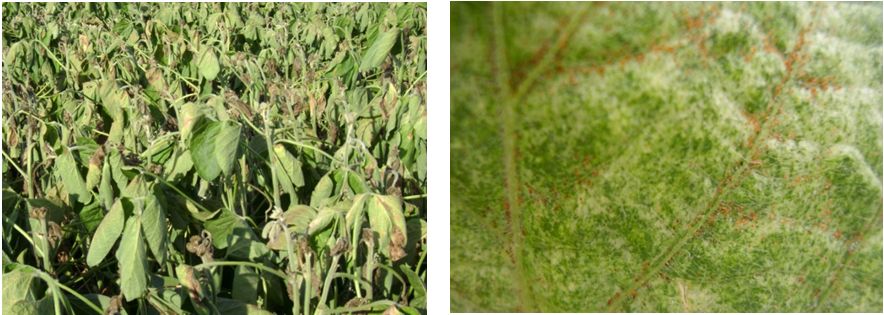Arañuela (Tetranychus uticae)
Order: Acarina Family: Tetranychidae
Introduction
In Uruguay, in recent seasons spider mite attacks were reported in soybean associated drought conditions. This led to a better understanding of this plague against different treatments. In general, the attacks begin with edges of the fields and spread in patches that, if not controlled properly, can cover the entire crop.
Main Features
Thrips are mouth stylets with which juice extracted from the plant cells, reducing photosynthetic surface and the amount of chlorophyll in infected leaves, which, in turn supporting wear lose water.
Cycle
Thrips go through a larval and nymphal two states before reaching the adult stage in 1-2 weeks, depending on temperatures. They are very small, measuring between 0.3 and 0.4 mm and live under a thin fabric weaving on the underside of the leaves. Populations of this pest can grow rapidly, females can place up to 300 eggs in 30 days.
Damage
The attacks of this pest may initially cause yellowing of basal leaves but if the attack lasts them take a tan color and die. Studies in the USA indicate that in severe attacks can decrease the performance up to 60%, when the attacks are early and short-lived, but if the attack is prolonged can cause total damage.
Photo 1 – Mite damage soybean
One factor that appears to be associated with the early mite infestations in soybean is the presence of weeds as guests Lamium amplexicaule, Herbicide control which originates the subsequent migration to the soybean thrips.
Control
In humid conditions may exist natural control thanks to the appearance of specific pathogenic fungi, which can result in up to 95% mortality of this pest.
Treatment recommendations for chemical control of spider mites in soybeans generally indicated by 20% of leaf area damaged in a vegetative state and 10% from pod formation.

